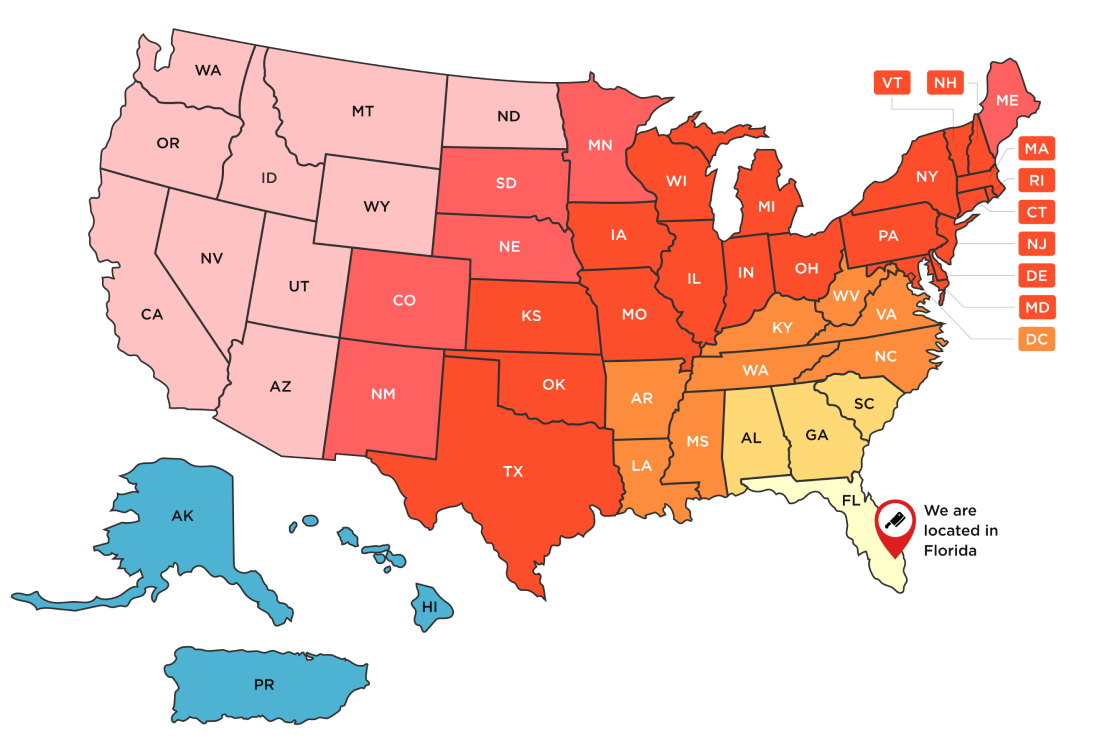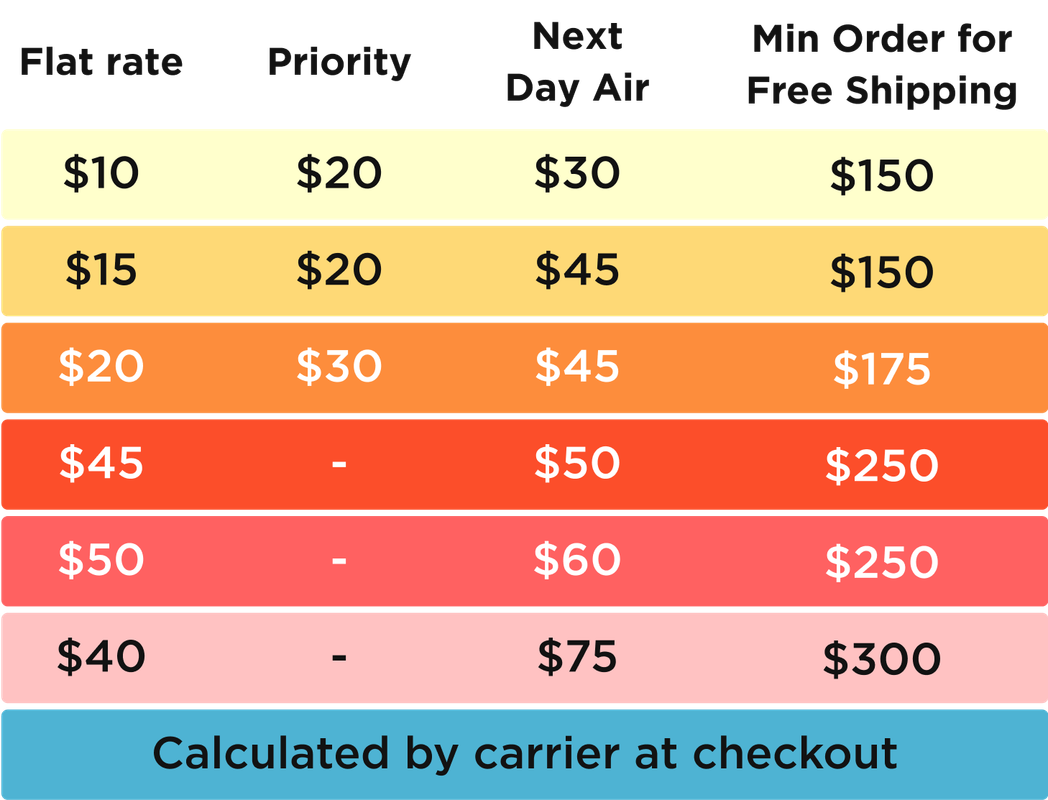
Wagyu 201: How Wagyu Is Your Wagyu?
At Meat N' Bone, we offer PLENTY of Wagyu products. We've put in the hard yards and spent many rigorous years trialing and testing the best of the best wagyu beef products from all over (I know, hard job) so we can bring you only the best. As a result, we've come to learn a thing or two (or many) about the industry and the somewhat misleading practices used by many retailers when it comes to marketing wagyu products.
Want to taste everything we talk about on this blog post? Head over to The Wagyu Bar in Miami, FL
How Wagyu Is Your Wagyu?
First off, Wagyu will usually marble much better than Angus or any other breed. It’s the genetics. Wagyu genetics are incredible. That said, marbling is not he only determinant of quality and not all Wagyu is equal. That said, marbling is not the only determinant of quality and not all Wagyu is equal.
Let's Start With The Basics
The word "Wagyu" translates to "Japanese Cow" (Wa means Japanese and gyu means cow). On its own, Wagyu does not really mean a lot as a term but it's used to categorize the four top cattle breeds in Japan:
- Wagyu: Kuroge Washu (Japanese Black)
- Mukaku Washu (Japanese Polled)
- Akage Washu (Japanese Brown)
- Nihon Tankaku Washu (Japanese Shorthorn).
The wagyu breeds present fantastic genetics, and under the right circumstances can yield cattle that presents spectacular intramuscular fat (marbling), which is very sought out by beef enthusiasts.
That said, Wagyu can also be of poor quality. A very small portion of actual Wagyu beef qualifies as A5 (BMS9-12) which is literally "off the chart" compared to Angus beef which can grade as high as BMS6. This is what all the raving is about).
This highly sought-after beef is a result of more than just genetics, it is the result of tradition and technology, the combination of the right grass, climate, feed, care and rainfall that affects the taste, texture and quality of a steak. The Japanese have turned beef into an art.
Do note, Japanese beef is not expensive because it's "better," it is expensive because demand exceeds supply. As a result, Australians and Americans, as well as many other farms around the world, have set out to develop Wagyu beef raised locally.
Wagyu Beef Outside Australia
While we cannot import the soil, weather, humidity or feed used to produce authentic Wagyu, we can definitely replicate it as much as we can.
That scarcity of Wagyu beef has led farmers all over the world to experiment with the Wagyu genetics. While it is illegal to export live cattle outside of Japan, Wagyu genetics are exported via semen, or at least they did up until the year 2001 where exporting semen was also made illegal. Today, “Domestic” Wagyu programs have had to rely on the Japanese bulls and cows already here to produce new bulls/dam herds to continue their crosses.
All Wagyu outside of Japan are a mixed breed or part of a new "Full Blood" strain (more on this later), which means that unless you took a trip to Japan or you paid the high price for authentic imported Japanese beef, it is pretty rare to sample authentic Wagyu.
Wagyu Outside of Japan
Wagyu outside of Japan has a complex history. Between 1976 and 1997, roughly 225 live Japanese cows were exported from Japan. Their descendants have gone to effectively create a new strain of "Wagyu" that is close to Japanese Wagyu, but not quite it.
This is because in 1997 the Japanese government officially declared Wagyu a national treasure and banned all further exports of live animals and export of genetics, and no additional Wagyu are known to have been exported after this.
The descendants of these original 225 cows are considered "full-blood wagyu". Females have been re-inseminated with full-blood wagyu, keeping the full-blood line alive. Full-blood Wagyu is rare and extremely expensive; as expensive as imported Japanese beef.
Cattle labeled as "Full Blood" must be able to prove genetic linkage through DNA testing (blood/hair tests) to prove that the pedigrees on these animals trace genetic linkage all the way back to cattle born and raised in Japan. This is regulated by the American Wagyu Association in the US, and similar entities elsewhere.
The descendants of these full-blood animals that show more than 93.75% Wagyu genetics but not quite 100% are considered "Purebred". These purebreds are usually the foundation (we will refer to these as P1) for most American or Australian "Wagyu" programs.
As the pure-breds and full bloods are mixed with Angus cattle, a new strain is born. This is what is referred to F1 cattle.
All Relevant Commerical Wagyu Programs In USA And Australia Are F1 Crosses
It is impossible to maintain Full Blood or Pure-bred genetics at a large scale. The American and Australian Wagyu industries focus on F1 cattle which will have around a 50%+ Wagyu gene pool. You will also find F2 an F3 cattle.
The F1, F2 and F3 terminology refers to Mendelian Genetics. Without getting too deep into genetics and biology, let’s just say these are the laws that explain how traits are passed from one generation to the next-and sometimes skip generations.
Geneticists and ranches have been learning and manipulating the genes of cows to breed cattle that retain the best of both breeds: Wagyu and Angus.
Of course, this is not as sexy as "Full Blood" or "Japanese Wagyu", so the industry has made it difficult for the end consumer to discern the differences.
Modern Wagyu Ranchers Are Basically Geneticists With Cowboy Hats And Boots

Today, ranchers are not only focused on the feed, growth and care of animals. Wagyu ranchers are heavily involved in the selection of the right bull to grow the heard.
The bulls selected to grow the herd (let’s call them P1) must present the strongest genes. To aid in this selection, the DNA of cattle is studied for EPDs (Expected Progeny Differences). The end-goal is to select bulls and cows that will have strong wagyu genes and phenotypic expressions.
The quality of the WHOLE HERD will be highly dependent on the quality of that P1 bull and that P2 cow.
Plenty of Wagyu bulls that aren’t desirable because their genes are weak or their phenotypic expression isn’t the most desirable. That’s why you can’t just take any two random angus cows and Wagyu bulls and mate them and get good offspring.
So...
P1 Bull + P2 Cow = F1 Steer / Heifer
That F1 cow is what you will see in most commercial American and Australian Wagyu beef programs. These F1 steers can grade all the way from BMS4-5 (Prime or slightly above prime) all the way to BMS8-9 (almost A5).
In Australia, the grading is more stringently regulated than in the US.
To keep things simple, both Americans and Australians refer to these as "Domestic Wagyu". It really isn't Wagyu, its a whole new strain that resulted from taking Wagyu out of Japan.
F1 vs F2 vs F3 vs F4 Wagyu
You may hear the terms F2, F3 and F4. These just refer to a further diluted strain of Wagyu, so a mix of two F1 animals or a mix between a F1 and a full blood. So F2 can refer to a result that could be superior to a F1 animal (because it was cross bred with a purebred or Full Blood) or one that is inferior because it is a breed from two F1 cows.
F1 Cow + F1 Bull = F2 Steer / Heifer
but also
F1 Cow + Full Blood Bull = F2 Steer / Heifer

Confusing? That's Because It Is!
Most domestic wagyu programs focus on selling F1 beef, but when they need to strengthen the herd, they will breed a F1 with a full-blood or pure-bred. But it is not done often. Particularly in commercial programs.
You may find some small programs (usually under 20 heads) focusing on cross-breeding to yield stronger genetics. That said, this becomes expensive. You are better off just paying for the real thing. Moreover, it does not necessarily yield a better product.
That is why at Meat N' Bone, we focus on offering 2 options: F1 Breeds (Wagyu-Angus, BMS 6-7 and BMS 8-9 Wagyu) or Japanese A5.
You Pay For What You Get
At the end of the day, you will pay for what you get. You don’t need to look, know or care about how "pure" your Wagyu is, just look for the marbling score. The rule of thumb is, more expensive beef is rarer (not necessarily better). Rarer beef is more expensive. That said, sometimes it's "fun" to eat something rarer. It's kind of like wearing a genuine Rolex.
Most brands don't disclose BMS scores, particularly in the US as most wagyu programs are self-regulated. Therefore, when it comes to anything above BMS8, Meat N' Bone prefers to work with Australian or Japanese suppliers that are government regulated. On the flipside, some of our American Wagyu can be as high as BMS11.
Finally, many new studies are showing the pH of the meat is as important as the marbling, so much so that certain programs are grading on pH only rather than marbling. While marbling is the visually appealing characteristic that gets us drooling, there are many other factors that play into how the steak will perform. Did the animal eat primarily corn? Potato byproduct? Sorghum? All these dietary components make huge changes in how the product tastes (corn produces a sweeter flavor in the finished product). At the end of the day, the most important thing is to find a butcher (preferably Meat N Bone :P) that has a good reputation for sourcing premium quality products.
Our firsthand experience has shown there’s a lot of information out there and marketing dollars spent to pump up the names and notoriety of certain brands, but that doesn’t mean the product eats well when it's on your plate. Trust your meat supplier and know that they are sourcing the best possible product for you.
Want to taste everything we talk about on this blog post? Head over to The Wagyu Bar in Miami, FL
Thanks to Brandon Rosenberg and the folks from Mishima Reserve, Ferry Farms and a few other small ranchers who took my phone calls while doing research for this post.
← Older Post Newer Post →









